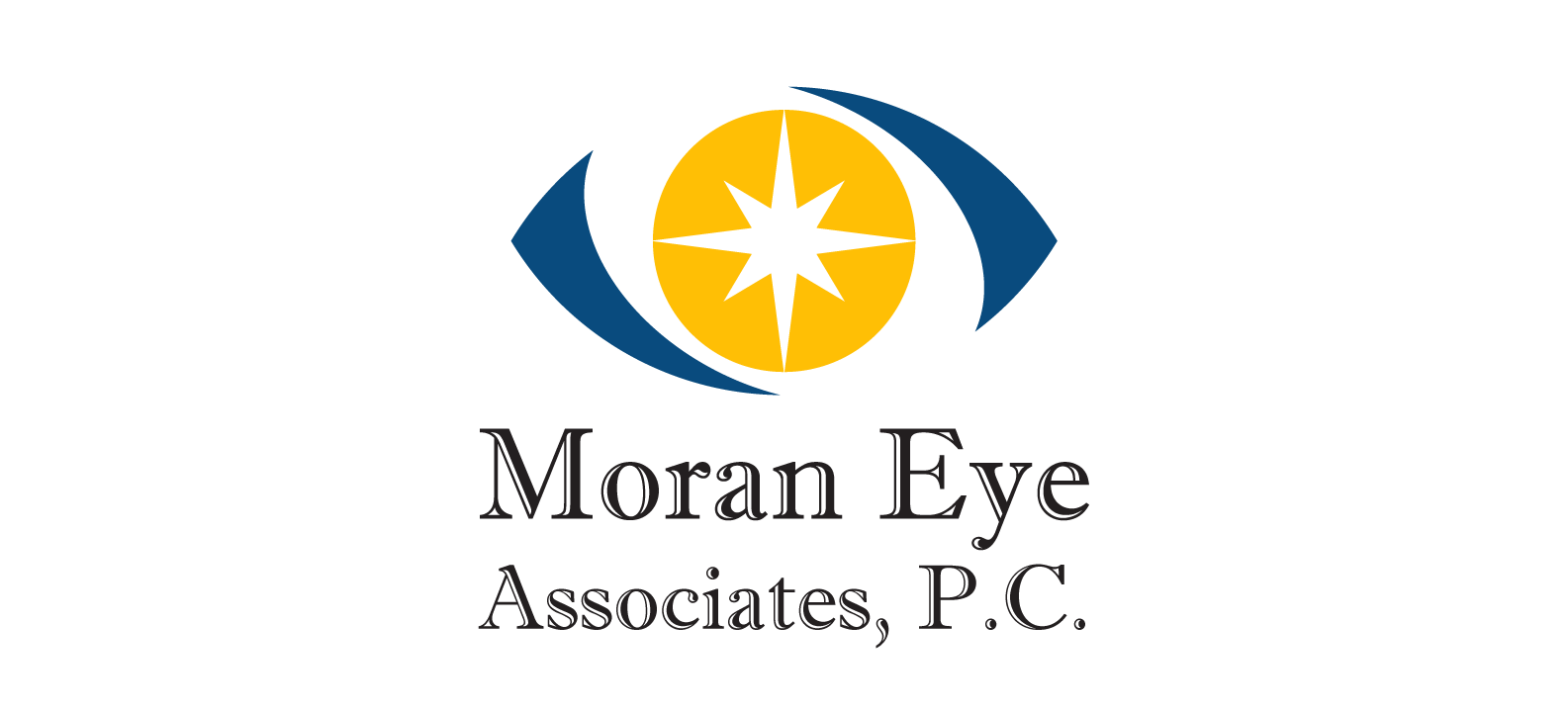by Dr. M | Jun 7, 2019 | Cataracts, Education, Exam, Experience, Medical Eye Care, Procedure, Surgery
Dr. Moran attends Surgical convention to Learn…and to TeacH
At this year’s annual conference of the American Society of Cataract and Refractive Surgeons (ASCRS), Dr. Moran was the speaker at two education sessions. He spoke to other physicians and practice administrators at these workshops.

Sherman Reeves, M.D. M.P.H ; Thomas Harvey, M.D.; Mark Moran, D.O., M.S.H.I., F.A.O.C.O
An experienced cataract surgeon, Dr. Moran instructed fellow surgeons on a procedure that he uses when removing cataracts: phaco-emulsification. This process uses an ultrasound device to break the cataract into small pieces that can be removed through a small incision. A smaller incision means quicker healing and less discomfort for the patient.
This hands-on lab allowed other surgeons to practice the process while receiving instruction from Dr. Moran, Dr. Harvey and Dr. Reeves. (pictured here).
Also at the conference, Dr. Moran also gave a presentation on Cybersecurity. He is well-versed on the topic of technology in healthcare, with a Masters Degree in Healthcare Informatics. This topic is critical for medical offices today, since keeping patient information secure is a priority. This session was co-chaired with Dr. Gerald Meltzer, who is a practice consultant.
by Dr. M | Jan 31, 2019 | Cataracts, Cornea, Cost, Diabetes, Education, Exam, Eyeglasses, Medical Eye Care, Procedure, Surgery
When it is time for cataract surgery, you have choices to make that will determine your future vision.
During cataract surgery, Dr. Moran will remove the cloudy lens of your eye and replace it with a clear Intraocular Lens (IOL). Patients have the option to choose from different types of IOLs for their surgery.
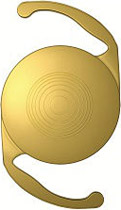
Intraocular lens implant
While all the IOLs offer improved vision, there are some lens choices that offer additional features, such as astigmatism correction, and vision at fixed points of focus – near, intermediate and far vision. Dr. Moran will discuss these lens choices with you. He will explain which option(s) are right for you, taking into consideration the health of your eye and your visual needs after surgery.
The chart below compares the features of the IOLs.
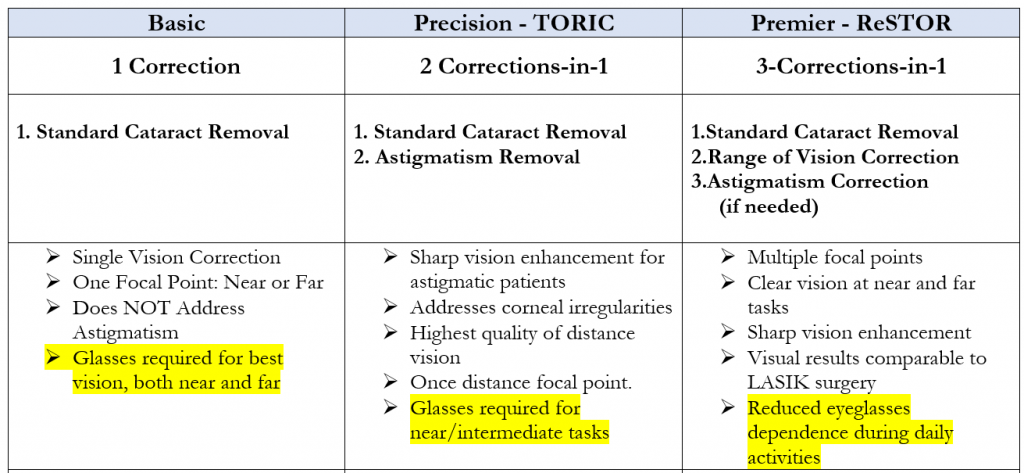
The Basic lens offers 1 area of correction, and may be covered by your insurance. This lens offers clearer vision at one point of focus either distance or near. For patients who don’t mind wearing glasses, this lens is a good option.
The Toric and ReSTOR lenses do more, so there is additional cost for these lenses. Insurance does not cover the cost of these lenses, since they are considered advanced technology lenses. These lenses are special order for you, so payment for these lenses is due one week prior to the surgery date.
The Toric lens corrects one point of focus, either distance or near, and corrects for astigmatism, which is an irregular shape of the cornea. Patients with a corneal astigmatism greater than 1.25 diopters are good candidates for this lens.
The ReSTOR lens offers multiple points of focus. This lens is designed with concentric circles, each with a specific prescription power. Your eye will be able to focus using the right power ring in the lens. ReSTOR lenses are recommended for patients who have healthy eyes, and who are having surgery on both eyes done within a few weeks of each other.
More information about cataract surgery and your IOL choices will be discussed at your cataract evaluation appointment with Dr. Moran, and again with our surgery coordinator at your scheduling/measurement appointment. We encourage all patients to check with their insurance company before their cataract surgery to find out specifics about what is covered under their plan. Some plans have co-pays and deductibles that may affect the amount that the patient will have to pay.
Click to read more about Cataracts
by Dr. M | Jan 8, 2019 | Cataracts, Cornea, Dry Eye, Exam, Experience, Medical Eye Care, Procedure, Vision
Corneal Therapy offers Successful Healing
Moran Eye Associates’ Dr. Bianca Tang recently used an innovative treatment to help a patient’s cornea heal faster and more effectively. This treatment promotes healing using amniotic membranes suspended in a ring that sits on the eye like a contact lens.
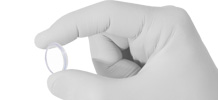
Prokera Corneal Treatment
The patient had been using prescription drop therapy over a period of months to help with a painful area of corneal thinning, but her eye wasn’t getting better. She was in pain, and and she was having cloudy vision. She was over 80 years old, and had other health issues that caused slower healing.
What did the patient think of the process?
“Dr. Tang recommended a new procedure that cured my cornea erosion issue. It was a stem cell lens that aided healing of the cornea. I now have my sight back in both eyes with no pain. Thank you so much for using this new procedure. It worked like a charm.”
The treatment Dr. Tang recommended was Prokera. The amniotic membranes in Prokera are safe, promote new cell growth, and prevent the development of scar tissue. The membrane itself dissolves after one week, and the doctor removes the ring following treatment.
Dr. Tang’s response to the results.
“The outcome was even better than I could have imagined. The area of epithelial defect that covered almost a quarter of her cornea was completely resolved. The most rewarding part of this treatment is knowing that the patient was no longer in pain, and that her vision was much improved.”

Prokera Corneal Treatment
Studies show that using amniotic membranes:
- Reduces pain
- Reduces inflammation
- Reduces Scar Formation
- Introduces essential factors for new cell growth
Whether managing disease, trauma, or post-operative care, healing of the ocular surface is essential to patients’ comfort and vision.
At Moran Eye Associates, our doctors offer excellent care that is personalized, innovative and effective. You can depend on us for all of your eye care needs for your entire family.
by Dr. M | Dec 27, 2018 | Cataracts, Contact Lenses, Diabetes, Dry Eye, Eye Safety, Eyeglasses, Floaters, Glasses, Glaucoma, LASIK, Low Vision, Macula, Procedure, Retina, Surgery, Vision
A patient asked the other day, “Do you do regular eye exams?”
Of course we do! At Moran Eye Associates we offer Complete Eye Care, which includes Vision, Medical and Surgical services.
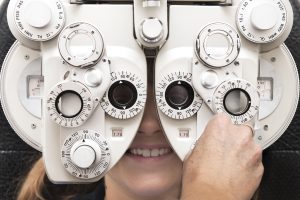
Better 1 or 2?
VISION: We accept VSP & NVA
- Routine Eye Exams
- Contact Lenses: Traditional & Specialty Lenses
MEDICAL: We accept most medical insurancessisipisi.ccsisipisi.ccsisipisi.ccsisipisi.cc
- Diabetic Eye Care: Diabetic Retinopathy
- Glaucoma Care: Medical and Surgical Treatment Options
- Macular Degeneration
- Dry Eye Treatment: Diagnostic Services & Thermal Therapy
- Eye Emergencies
- Infection/Inflammation
- Low Vision Services
SURGICAL: Dr. Moran does surgery at the Surgery Center of Allentown, Sightpath LASIK Center in Bethlehem, as well as some procedures in our Delaware Avenue office.
- Cataracts
- LASIK
- PRK
- Laser Floater Removal
- Glaucoma Eye Surgery
- Foreign Body Removal
- Eye Lid Surgery
Please contact our office if you need an appointment for your eye care. Call or text us at 610-628-2022, or send us an email by filling out the form on the right!
by Dr. M | Oct 23, 2018 | Cataracts, Cost, Education, Exam, Glaucoma, Mark Moran, Medical Eye Care, Procedure, Surgery
The iStent Inject: This procedure may eliminate the need for daily glaucoma drops!
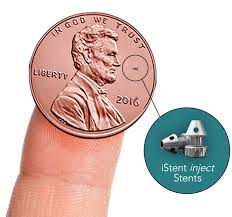
Size of the iStent Inject
Dr. Mark Moran is now offering Micro-Invasive Glaucoma Surgery (MIGS) with the iStent Inject. This option is currently available for glaucoma patients who are having cataract surgery.
Clinical studies have shown a significant decrease in eye pressure in mild-to-moderate glaucoma with this implant. It is interesting to note that the iStent Inject is the smallest medical device known to be implanted in the human body. The picture to the right shows the actual iStent as a tiny speck on the face of a penny!
An Alternative to Glaucoma Drop Therapy
If using drops to control your glaucoma poses problems for you, this procedure may be a great alternative. Ask yourself if you have these issues with your glaucoma medication:
- Do you have problems putting drops in your eyes?
- Do you forget to use your drops as prescribed?
- Do you have financial concerns with the cost of prescription drops?
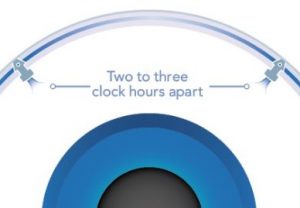
iStent Inject in place
How the iStent works: During cataract surgery, Dr. Moran inserts these tiny stents to create two openings between the front part of the eye and the eye’s natural drainage pathway. This improved flow decreases the pressure in the eye.
Insertion of this FDA approved device is painless. You won’t be able to see or feel these microscopic devices. They are so small that you won’t have to worry about going through an airport metal detector or having an MRI.
This combined cataract/stent procedure does not significantly increase the amount of time that you will spend in the operating room. The recovery time from this procedure is the same as with cataract surgery alone.
Dr. Moran explains the results: “I’ve seen a decrease in pressure in the patients who have had the stents inserted. Many have stopped using their drops altogether. We remind patients that this stent procedure is a treatment, NOT a cure for glaucoma. You still need to follow up with regular appointments to monitor your glaucoma, and maintain the health of your eyes.”
If you have questions about glaucoma, cataracts, or any other vision concern, call to make an appointment at 610-628-2022. Dr. Moran and Dr. Tang would be happy to review your history and discuss if this procedure is right for you.
by Dr. M | Jul 25, 2018 | Cataracts, Diabetes, Dilation, Exam, Experience, Eyeglasses, Glasses, LASIK, Macula, Mark Moran, Medical Eye Care, Patient Care, Retina
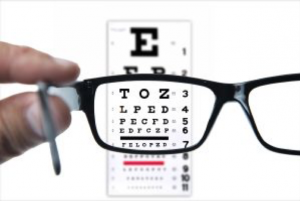
Are you Seeing your Best?
How Vision is Measured
The distance vision of a normal human eye is defined at 20/20. This number illustrates what a person with normal vision can see at twenty feet. Your visual acuity is measured on how it relates to vision at 20 feet.
- If your vision is 20/40, you can see at 20 feet, what a normal eye can see at 40 feet.
- If your vision is 20/100, you can see at 20 feet, what a normal eye can see at 100 feet.
- If your vision is 20/400, you can see at 20 feet, what a normal eye can see at 400 feet.
When you read an eye chart, chances are that person testing you is paying attention to what you say, as well as how you say it. They will know if you are seeing clearly or are struggling and making guesses. It never pays to cheat on your eye test!

Driving requirements
How well do I need to see to drive?
Although each state determines their specific requirements, generally 20/40 vision is needed to pass the driving test. If you need glasses to see 20/40, it will be indicated on your driver’s license. While your distance vision is key to passing the driving test, there are other factors that are considered as well. For complete information on what is required in Pennsylvania, click on the link.
Pennsylvania Drivers Visual Standards
After vision correction surgery, like LASIK or cataract surgery, you may be able to see well enough to have the vision correction restriction removed from your license.
What is legally blind?
If you cannot see any letters below the 20/200 line, even when wearing glasses or contacts, you are considered legally blind. If your vision can be corrected by putting on a pair of glasses, you may have poor vision, but you are not legally blind.

I see 20/20, do I need an eye exam?
Absolutely! Measuring your vision is an important part of your comprehensive exam, but there is so much more that we check at your visit. We will check your pupils, eye pressure and field of vision. We will record your visual history, health history and medications. The doctor will examine the health of your eyes using a slit lamp microscope, checking for eye disease, including glaucoma, macular degeneration, diabetic retinopathy and cataracts.
Early detection of eye disease is your best defense against vision loss. So even if you don’t need a new pair of glasses, make sure to schedule your regular check-up, so you can keep seeing your best!

